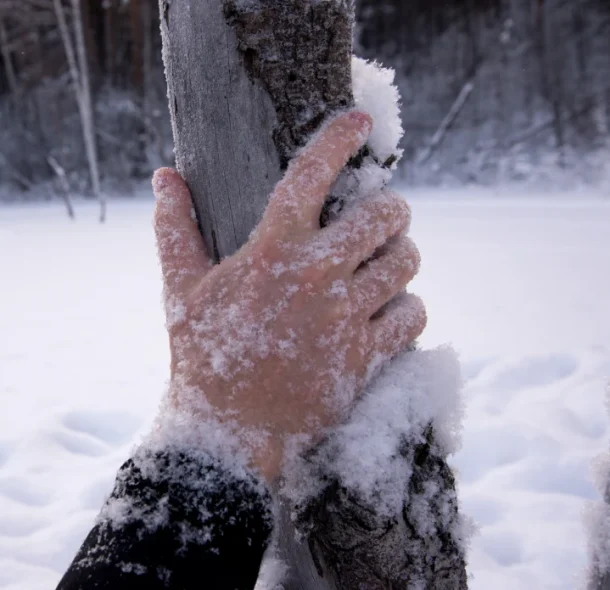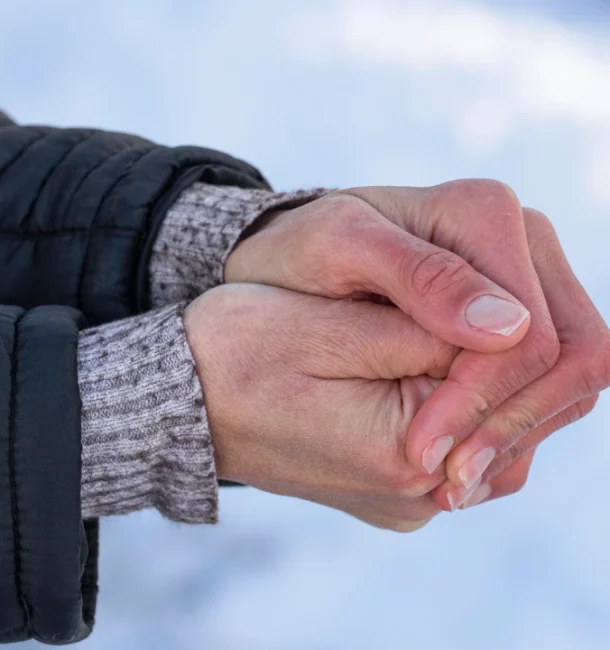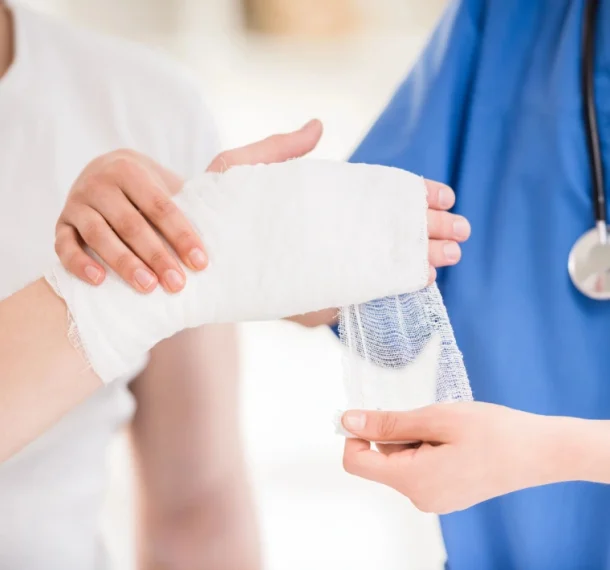Frostbite
- Quick Relief for Frostbite
- Prevent Further Damage
- Stay Safe in Cold Weather
- Fast, Effective Frostbite Care at NextGen

Frostbite
- Quick Relief for Frostbite
- Prevent Further Damage
- Stay Safe in Cold Weather
- Fast, Effective Frostbite Care at NextGen

Immediate Access to Expert Care
NextGen Walk-in Clinic & Urgent Care provides quick access to skilled professionals who can assess and treat your frostbite right away. No appointment is needed—just walk in and get the care you deserve without the wait.
Safe and Controlled Rewarming Techniques
We offer safe rewarming methods to gradually warm the affected area without the risk of causing further damage or burns. Our team ensures that your skin and tissues are properly cared for during the recovery process.
Wound Care and Infection Prevention
Our medical team offers personalized wound care to prevent infection and helps monitor the healing process. Follow-up appointments are available to ensure proper skin healing and a smooth recovery.
Education and Prevention Tips
In addition to treatment, we educate you on frostbite prevention, helping you recognize early signs and stay protected from cold-related injuries in the future. We provide helpful guidance to avoid frostbite risks going forward.

Cold Front: Frostbite and the Spectrum of Cold-Related Injuries
Environmental injuries are injuries caused by external environmental factors such as extreme temperatures, insects, or exposure to hazardous substances. These injuries can occur in a variety of settings, including outdoor activities, workplace environments, or even at home.
One common environmental injury that occurs during colder weather is frostbite. Frostbite happens when skin and underlying tissues freeze due to prolonged exposure to cold temperatures, especially in areas like the fingers, toes, nose, and ears.
Minor frostbite affects the outermost layers of the skin and can cause symptoms like redness, numbness, and tingling. Though minor frostbite is usually not life-threatening, if left untreated, it can escalate into more severe forms that can cause permanent damage.
Facts About Minor Frostbite
1. Frostbite Can Occur in Freezing Temperatures
Frostbite can develop in temperatures below 32°F (0°C), but the risk significantly increases when windchill factors make the temperature feel much colder. Wind speeds of 20 mph can cause frostbite to occur in just 30 minutes at 30°F (-1°C).
2. Frostbite Affects Extremities
Frostbite most commonly affects the fingers, toes, ears, and nose. These areas are more vulnerable due to their distance from the heart and lower blood flow, making them more susceptible to freezing in cold conditions.
3. Frostbite Can Cause Long-Term Damage
If untreated, minor frostbite can progress to more severe stages, leading to tissue death, loss of function, and permanent damage. Early intervention can significantly reduce these risks and improve outcomes.
4. Rewarming Must Be Done Carefully
It is essential to rewarm frostbitten areas gradually using warm (not hot) water, with temperatures ranging between 100°F to 104°F (37°C to 40°C). Applying direct heat or rubbing the area can cause further damage.
5. Pain and Sensitivity May Persist
After rewarming, patients may experience pain, tingling, or burning sensations as blood flow returns to the affected area. Over-the-counter pain relief, such as ibuprofen, can help manage discomfort during recovery.
6. Infection Prevention is Crucial
Minor frostbite can cause blisters and open wounds, which increases the risk of infection. Prompt medical care, including proper wound care, is essential to prevent infection and ensure proper healing.
7. At-Risk Populations Include Those with Poor Circulation
Individuals with conditions that affect circulation, such as diabetes or Raynaud’s disease, are more prone to frostbite. These conditions reduce blood flow to extremities, making them more vulnerable to cold-related injuries.
8. Frostbite Can Happen in Mild Weather
While frostbite is commonly associated with extremely cold weather, it can also occur in milder conditions when wind and wetness are involved, making it important to take precautions even in less severe climates.
9. Treatment Time is Crucial
Seeking medical attention within the first 24 hours of frostbite can reduce complications and increase the chances of a full recovery. Delayed treatment increases the risk of permanent damage to tissues.
10. Frostbite Can Be Prevented with Proper Precaution
Dressing in layers, covering extremities with warm clothing, and avoiding prolonged exposure to cold weather can help prevent frostbite. Additionally, recognizing early warning signs such as numbness, tingling, and pale skin is key to preventing further damage.
The Risk of Frostbite and Environmental Injuries
Frostbite is most commonly associated with extremely cold climates or winter months. However, even during milder temperatures, frostbite can occur if there is prolonged exposure to freezing conditions, particularly in windy or wet environments. Early identification and treatment are essential to prevent further tissue damage.
In addition to frostbite, other cold-related injuries, such as hypothermia, can develop and be just as dangerous. Recognizing the signs of frostbite and seeking immediate medical attention is critical for reducing long-term effects and ensuring proper healing.
Several factors contribute to the increased risk of environmental injuries:
• Weather Conditions: Extreme cold and wet conditions increase the likelihood of frostbite. Windchill can make cold temperatures feel much more dangerous and speed up the process of frostbite.
• Clothing Choices: Wearing inadequate or wet clothing can elevate the risk of frostbite. Exposed skin, such as the nose, ears, and fingers, is particularly vulnerable to freezing.
• Pre-existing Conditions: Individuals with poor circulation, diabetes, or heart conditions are more susceptible to cold-related injuries, including frostbite. These conditions can make the body less efficient in managing temperature extremes.
While minor frostbite may seem like a small issue at first, it can escalate quickly without proper care. Untreated frostbite can lead to more severe tissue damage, and in extreme cases, the affected tissue may need to be removed.
At NextGen Walk-in Clinic & Urgent Care, we provide immediate evaluation and treatment for frostbite to prevent it from progressing. Our team of medical professionals ensures proper care to help you recover quickly and safely from cold-related injuries.


Minor Frostbite: Overview and Recognizing Early Signs
A. What is Minor Frostbite?
Minor frostbite, also known as first-degree frostbite, is a mild form of frostbite that primarily affects the outermost layers of the skin. While the tissues underneath the skin may freeze slightly, this condition does not cause permanent damage at this stage. Minor frostbite is typically the result of prolonged exposure to temperatures below freezing, especially when cold, wet conditions, or windchill are present.
Areas of the body that are particularly vulnerable to minor frostbite include the fingers, toes, nose, and ears. These body parts are farthest from the heart, and as a result, they receive less blood flow during cold conditions, making them more susceptible to freezing.
Early recognition of frostbite is crucial for minimizing damage and promoting healing. The following are common warning signs of minor frostbite:
• Pale or White Skin: The affected area may appear pale, white, or waxy as blood flow to the skin decreases due to the cold temperatures.
• Cold Sensation: The skin may feel cold to the touch and unusually stiff as the freezing process begins.
• Numbness and Tingling: One of the first signs of frostbite is a loss of sensation, causing numbness or a tingling sensation in the affected area. This occurs as the cold affects the nerves.
• Pain or Stinging: Once the skin begins to warm up, it can cause intense pain, stinging, or a sensation of extreme cold.
• Swelling or Redness: As blood flow returns to the affected area during rewarming, the skin may become red and slightly swollen. This is a sign that circulation is starting to improve.
Recognizing these symptoms early can help prevent minor frostbite from advancing into more severe stages. If you notice any of these signs, it’s important to seek medical care to ensure the proper steps are taken for treatment and recovery.
Causes and Risk Factors for Minor Frostbite
One of the primary causes of minor frostbite is prolonged exposure to temperatures below 32°F (0°C). This typically occurs during activities such as walking, working, or playing outdoors in freezing weather without adequate clothing. The longer the skin is exposed to cold temperatures, the higher the risk of frostbite, especially in the most vulnerable areas of the body, like the fingers, toes, nose, and ears.
The risk of frostbite increases significantly when the skin is wet. Wearing damp clothing, gloves, or socks allows cold temperatures to penetrate the skin more quickly. Wetness conducts heat away from the body faster than dry clothing, making it easier for the skin to freeze even in moderately cold conditions.
Windchill is a significant factor in increasing the risk of frostbite. It occurs when wind speeds cause the air temperature to feel colder than it actually is, accelerating the freezing of exposed skin. For example, when the temperature is 30°F (-1°C) and the wind is blowing at 20 mph, it can feel like -10°F (-23°C), drastically increasing the risk of frostbite. This makes it important to consider both the actual temperature and the windchill factor when assessing the risk of frostbite during outdoor activities.
People with medical conditions that impair blood circulation, such as diabetes, peripheral artery disease, or Raynaud’s disease, are more susceptible to frostbite. These conditions restrict proper blood flow to the extremities, making the fingers, toes, and other peripheral areas more vulnerable to cold temperatures. When blood flow is insufficient, the skin is less able to maintain warmth, which can lead to frostbite if the exposure continues for too long.
By understanding these causes and risk factors, individuals can take appropriate precautions to reduce the likelihood of frostbite, such as wearing proper clothing and taking breaks to warm up when in cold conditions.

Treatment for Minor Frostbite
A. Rewarming the Affected Area
The first step in treating minor frostbite is gently rewarming the affected area. This should be done using warm water, with a temperature range of 100°F to 104°F (37°C to 40°C). It’s important to avoid hot water, heating pads, or open flames, as these can cause burns and further damage to the skin. Rewarming should be gradual to avoid shocking the body and causing additional harm.
It is critical not to rub the frostbitten area, as this can lead to further damage to the skin and the underlying tissues. Gently rewarming the area allows blood flow to return to the skin and promotes healing without causing additional stress on the affected area.
B. Pain Management
As blood flow returns to the affected area, pain and discomfort may occur. Over-the-counter pain relievers such as ibuprofen or acetaminophen can help alleviate mild to moderate pain. These medications work by reducing inflammation and relieving discomfort.
For more severe pain, prescription medications may be required to manage discomfort during the rewarming process and recovery period. It’s important to consult with a healthcare provider at NextGen Walk-in Clinic & Urgent Care for the appropriate pain management plan tailored to your needs.
C. Protecting the Affected Area
To prevent further injury and contamination, it is important to keep the frostbitten area protected. Gently wrap the area in a clean, dry cloth or sterile dressing to safeguard the skin from additional trauma. Movement should be minimized to avoid causing further damage and to promote proper healing.
At NextGen Walk-in Clinic & Urgent Care, our healthcare professionals will guide you on how to protect the frostbitten area, including instructions on how to care for the area at home and when to seek further medical attention. Taking these precautions is essential for reducing complications and ensuring a smooth recovery.

Importance of Early Treatment for Minor Frostbite
A. Why Early Medical Intervention is Key
Early treatment for minor frostbite is crucial in preventing the condition from worsening. When frostbite is left untreated, it can progress to more severe stages, including second-degree or third-degree frostbite, where deeper tissues and nerves become affected. At this point, the damage to the skin and underlying tissues can become permanent, leading to loss of function and, in some cases, tissue death.
Seeking immediate medical care for frostbite ensures that the injury is properly assessed and treated, reducing the risk of complications. At NextGen Walk-in Clinic & Urgent Care, we specialize in the timely care of minor frostbite and provide the necessary interventions to prevent further damage and promote healing. Early intervention helps to minimize pain, restore proper circulation, and maintain the health of the affected area.
How NextGen Can Help with Minor Frostbite
When you visit NextGen Walk-in Clinic & Urgent Care for a potential frostbite injury, our experienced medical professionals quickly assess the severity of the condition. We use advanced diagnostic tools to evaluate the extent of frostbite and determine whether it is in the early stages or more severe. Based on this assessment, we can develop the most appropriate treatment plan to ensure that your injury heals properly and does not progress to a more serious condition.
Our team is trained to monitor for potential complications that may arise from frostbite, such as infections or tissue damage, so you can rest assured that you are receiving the best care available.
Rewarming is a crucial part of treating frostbite, and at NextGen Walk-in Clinic & Urgent Care, we ensure that it is done safely and effectively. Our medical professionals use controlled rewarming techniques to gradually warm the affected area without the risk of burns or further injury. This process helps to restore circulation and reduce the risk of permanent damage to the skin and tissues.
We also provide pain relief options, ranging from over-the-counter medications to stronger prescriptions if needed, to ensure you are as comfortable as possible during the rewarming process and throughout your recovery.
If your frostbite results in blisters or skin breakdown, our team will provide specialized wound care to prevent infection. We monitor the affected area closely for signs of infection and provide any necessary treatments, such as antibiotics or topical ointments, to protect the area as it heals. Additionally, if you require dressing changes or further medical intervention, we’ll guide you through the process and ensure that your injury is healing correctly.
Follow-up appointments are available to check on your progress, ensuring that the tissue is recovering properly and that there are no signs of complications like infection or necrosis.
At NextGen Walk-in Clinic & Urgent Care, we believe in helping patients understand how to prevent frostbite and other cold-related injuries. Our medical professionals will provide valuable tips on how to layer clothing effectively, ensuring that extremities are properly protected in cold weather. We’ll also educate you on how to recognize the early signs of frostbite so that you can seek treatment before the injury worsens.
Additionally, we provide guidance on preventing other cold-related injuries, such as hypothermia, to help you stay safe during colder months. By educating our patients, we aim to reduce the risk of frostbite and promote overall health and safety.

Customer Reviews for NextGen Walk-in Clinic & Urgent Care

Amy A.
Lorem ipsum dolor sit amet, consectetur adipiscing elit. Praesent tincidunt tortor at tempor auctor. Fusce venenatis euismod eros eget ullamcorper. Aliquam fermentum dignissim metus vel maximus. Integer quis tempor sem. Mauris placerat fermentum ornare. Nam vestibulum hendrerit purus eget auctor. Aliquam erat volutpat.

Steven L.
Lorem ipsum dolor sit amet, consectetur adipiscing elit. Praesent tincidunt tortor at tempor auctor. Fusce venenatis euismod eros eget ullamcorper. Aliquam fermentum dignissim metus vel maximus. Integer quis tempor sem. Mauris placerat fermentum ornare. Nam vestibulum hendrerit purus eget auctor. Aliquam erat volutpat.

Eric M.
Lorem ipsum dolor sit amet, consectetur adipiscing elit. Praesent tincidunt tortor at tempor auctor. Fusce venenatis euismod eros eget ullamcorper. Aliquam fermentum dignissim metus vel maximus. Integer quis tempor sem. Mauris placerat fermentum ornare. Nam vestibulum hendrerit purus eget auctor. Aliquam erat volutpat.
Frequently Asked Questions (FAQs) About Frostbite
Lorem Ipsum is simply dummy text of the printing and typesetting industry. Lorem Ipsum has been the industry's standard dummy text ever since the 1500s, when an unknown printer took a galley of type and scrambled it to make a type specimen book. It has survived not only five centuries, but also the leap into electronic typesetting, remaining essentially unchanged. It was popularised in the 1960s with the release of Letraset sheets containing Lorem Ipsum passages, and more recently with desktop publishing software like Aldus PageMaker including versions of Lorem Ipsum.
Lorem Ipsum is simply dummy text of the printing and typesetting industry. Lorem Ipsum has been the industry's standard dummy text ever since the 1500s, when an unknown printer took a galley of type and scrambled it to make a type specimen book. It has survived not only five centuries, but also the leap into electronic typesetting, remaining essentially unchanged. It was popularised in the 1960s with the release of Letraset sheets containing Lorem Ipsum passages, and more recently with desktop publishing software like Aldus PageMaker including versions of Lorem Ipsum.
Lorem Ipsum is simply dummy text of the printing and typesetting industry. Lorem Ipsum has been the industry's standard dummy text ever since the 1500s, when an unknown printer took a galley of type and scrambled it to make a type specimen book. It has survived not only five centuries, but also the leap into electronic typesetting, remaining essentially unchanged. It was popularised in the 1960s with the release of Letraset sheets containing Lorem Ipsum passages, and more recently with desktop publishing software like Aldus PageMaker including versions of Lorem Ipsum.
Lorem Ipsum is simply dummy text of the printing and typesetting industry. Lorem Ipsum has been the industry's standard dummy text ever since the 1500s, when an unknown printer took a galley of type and scrambled it to make a type specimen book. It has survived not only five centuries, but also the leap into electronic typesetting, remaining essentially unchanged. It was popularised in the 1960s with the release of Letraset sheets containing Lorem Ipsum passages, and more recently with desktop publishing software like Aldus PageMaker including versions of Lorem Ipsum.
Lorem Ipsum is simply dummy text of the printing and typesetting industry. Lorem Ipsum has been the industry's standard dummy text ever since the 1500s, when an unknown printer took a galley of type and scrambled it to make a type specimen book. It has survived not only five centuries, but also the leap into electronic typesetting, remaining essentially unchanged. It was popularised in the 1960s with the release of Letraset sheets containing Lorem Ipsum passages, and more recently with desktop publishing software like Aldus PageMaker including versions of Lorem Ipsum.
Lorem Ipsum is simply dummy text of the printing and typesetting industry. Lorem Ipsum has been the industry's standard dummy text ever since the 1500s, when an unknown printer took a galley of type and scrambled it to make a type specimen book. It has survived not only five centuries, but also the leap into electronic typesetting, remaining essentially unchanged. It was popularised in the 1960s with the release of Letraset sheets containing Lorem Ipsum passages, and more recently with desktop publishing software like Aldus PageMaker including versions of Lorem Ipsum.
Lorem Ipsum is simply dummy text of the printing and typesetting industry. Lorem Ipsum has been the industry's standard dummy text ever since the 1500s, when an unknown printer took a galley of type and scrambled it to make a type specimen book. It has survived not only five centuries, but also the leap into electronic typesetting, remaining essentially unchanged. It was popularised in the 1960s with the release of Letraset sheets containing Lorem Ipsum passages, and more recently with desktop publishing software like Aldus PageMaker including versions of Lorem Ipsum.
Lorem Ipsum is simply dummy text of the printing and typesetting industry. Lorem Ipsum has been the industry's standard dummy text ever since the 1500s, when an unknown printer took a galley of type and scrambled it to make a type specimen book. It has survived not only five centuries, but also the leap into electronic typesetting, remaining essentially unchanged. It was popularised in the 1960s with the release of Letraset sheets containing Lorem Ipsum passages, and more recently with desktop publishing software like Aldus PageMaker including versions of Lorem Ipsum.
Minor Frostbite Treatment and Care at NextGen Walk-in Clinic & Urgent Care
Minor frostbite may seem like a small concern, but if left untreated or ignored, it can lead to serious complications. The key to preventing further damage is early intervention and proper care. At NextGen Walk-in Clinic & Urgent Care, we understand the urgency of treating environmental injuries like frostbite and are dedicated to providing immediate, expert care to help you recover quickly and safely.
Our team is committed to diagnosing, treating, and managing minor frostbite, offering personalized treatment plans that include rewarming techniques, pain management, and protective wound care. We also provide education to help you prevent future frostbite and other cold-related injuries, ensuring that you can safely enjoy outdoor activities during cold weather.
If you suspect you or someone else is suffering from minor frostbite, don’t hesitate—NextGen Walk-in Clinic & Urgent Care is here to help. Visit us today for prompt and effective treatment to prevent further complications and get back to feeling your best.

